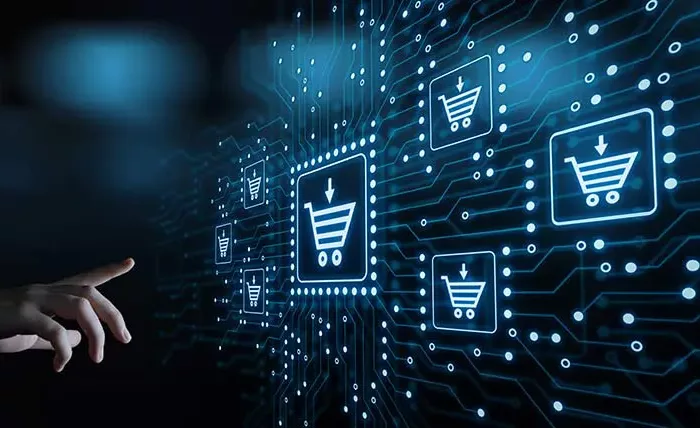Share
Author
George Anderson
Share
Managing the complexity of B2B ecommerce
Who owns your ecommerce infrastructure? Not just the storefront, not just the ERP integration, but the system of systems on which you and your customers depend. It’s a fair question—and one which must be answered. For enterprises launching ecommerce, the list of possible solutions breaks out into two categories:
- Those that require you to support and maintain the ecommerce infrastructure yourself.
- Those that don’t (e.g. managed solutions like Corevist Commerce).
In this article, we’ll look at 5 real-life factors affecting your ecommerce business and how each one behaves under the managed solution model vs. the in-house model.
First, here’s the scope of the problem.
Scope of the problem: Enterprise ecommerce is a system of systems
Enterprise-class ecommerce is complex. You’ll never need just one application to support a thriving ecommerce business. For the global enterprise, ecommerce usually takes the form of a system of systems in which each piece must keep working for the whole to keep working. This is particularly true if you want your ecommerce solution to interact with your ERP system for accurate contract pricing, real-time inventory availability, smart SKU substitution, and more.
Common components in enterprise-class ecommerce include:
- Your ecommerce platform(s)—Heaven forbid you need more than one for different audiences, user types, or segments.
- SSO (single sign on)—Whether they’re employees or customers, you may want to unify your login experience to remove friction.
- Your middleware or SAP integration solution—Your ecommerce solution must interact with your ERP in real time. Who’s going to build and manage that?
- Your customer dashboard solution—100% customer self-service means more than just order placement. Your customers need visibility into order status, line item status, shipment status, and account/credit standing. Who’s going to give it to them?
- And more…
So who’s responsible for this system of systems? At a high level, how you answer that question is the difference between a managed solution and an in-house solution.
Now let’s break out the question into the 5 factors we mentioned earlier.
Factor 1: Software Licensing
Obviously, you need to license each of the software components that will make up your ecommerce infrastructure. Typically, you’ll need licenses for each of the systems we listed above. And if you own your ecommerce infrastructure in-house, then you’re responsible for coordinating the licensing of all the component systems.
In contrast, a managed solution provider (like Corevist) offers you “one throat to choke” for all the pieces of your ecommerce infrastructure. Under our model, you don’t have to worry about each piece of the puzzle because we take care of it.
Factor 2: Implementation + Integration
How are you going to handle ERP integration? And how are you going to handle your rollout (particularly if you need multiple sales areas around the globe)?
A managed solution partner like Corevist provides your SAP ERP integration out of the box. Our solution doesn’t require middleware, but integrates to SAP directly. We often call it “a window into your SAP system.” This ensures that business-critical data—like user-specific contract pricing, real-time inventory, account credit status, and more—seamlessly integrates with your ecommerce storefronts. Our integration is prebuilt and fully configurable to your business needs. Read more here: [WHY 90?]
Speaking of implementation: If you decide to own your ecommerce infrastructure in-house, you’ll encounter additional complexity when it’s time to scale up your ecommerce business to multiple geographies and/or brands. Why? Because without a managed provider strategizing a templatized ERP integration, you’ll have to rebuild that integration for each and every storefront. (Hint: Systems integrators don’t care. Since they bill time and material, they’ll gladly take on separate redundant integration projects so you miss out on economies of scale which you can leverage under a templatized model.)
Here’s how a good managed solution provider does a global rollout. By the way, this is our model. We use it to ensure you get maximum value and don’t end up reinventing the wheel for each ecommerce storefront.
Factor 3: Hosting
Who’s going to host ecommerce? This isn’t a trivial question. On-premises solutions typically take longer to get up and running, and they’ll require you to manage the hosting in-house (or outsource it to yet another 3rd party).
As the B2B ecommerce market becomes more competitive and the pace of change increases, it’s best to choose a solution that’s flexible and scalable, ready to shift with your business. That’s why we built Corevist Commerce as a cloud solution from the very beginning. Our goal is to worry about ecommerce so you can focus on running your business—and the Corevist cloud empowers us to do so.
Factor 4: Ongoing Management
The system-of-systems idea comes into play here—big time. When multiple 3rd parties are each responsible for their piece of your ecommerce puzzle, bad things can happen when something goes down. Who do you call when you have a problem? Who debugs that system of systems?
That question is particularly troubling if, like a lot of organizations, you don’t want to “become a technology company.” For organizations that can’t justify an in-house ecommerce department, a managed solution partner is ideal. You get to leverage your partner’s expertise—they already know the ins and outs of enterprise-class ecommerce. And you can launch your digital channel without increasing the burden on your existing IT resources. That’s huge.
Factor 5: Growth
If you build it, they’ll come, right?
Not necessarily.
This is the dark secret which most B2B ecommerce platform providers aren’t talking about. At the end of the day, they actually aren’t incentivized to see your ecommerce business grow. They want to sell you a platform—you do the rest.
A managed solution provider should offer you ongoing consulting for the growth of your digital channel. That’s why a key part of the Corevist process is helping you craft an ecommerce rollout care package that’s tailored to your customers’ needs. This helps ensure that your web channel hits the ground running.
Beyond Phase I, a managed solution partner should also help you craft your global rollout plan (if you’re doing more than one storefront or geography). A detailed plan will help you reach ecommerce maturity in each of your divisions.
The managed solution in a nutshell
To summarize, here’s what you get in a managed solution:

Rather than having to coordinate multiple 3rd parties, Corevist gives you “one throat to choke” for all things ecommerce. That means you can stop worrying about infrastructure and focus on your business.
Moving forward: FREE case study
Want to see fully managed ecommerce in real life? Download this case study on Blount International. You’ll learn how Blount launched a thriving web channel through Corevist Commerce and satisfied their customers’ needs—all without increasing the burden on internal IT staff.
[want_more title=”Learn more” subtitle=”FREE Case study: Blount International” description=”Learn how multiple departments came together as Blount International launched ecommerce.” button_text=”Download Now” button_link=”https://www.corevist.com/blount-international-inc/” button_class=”btn btn-primary blount-case-study” title2=”See it for yourself” subtitle2=”Talk to us” description2=”Curious what Corevist Commerce can do for you? Let us show you a personalized demo. You’ll see ecommerce with real-time SAP data.” button_text2=”Schedule Demo” button_link2=”https://www.corevist.com/demo/” button_class2=”demo-popup”]










